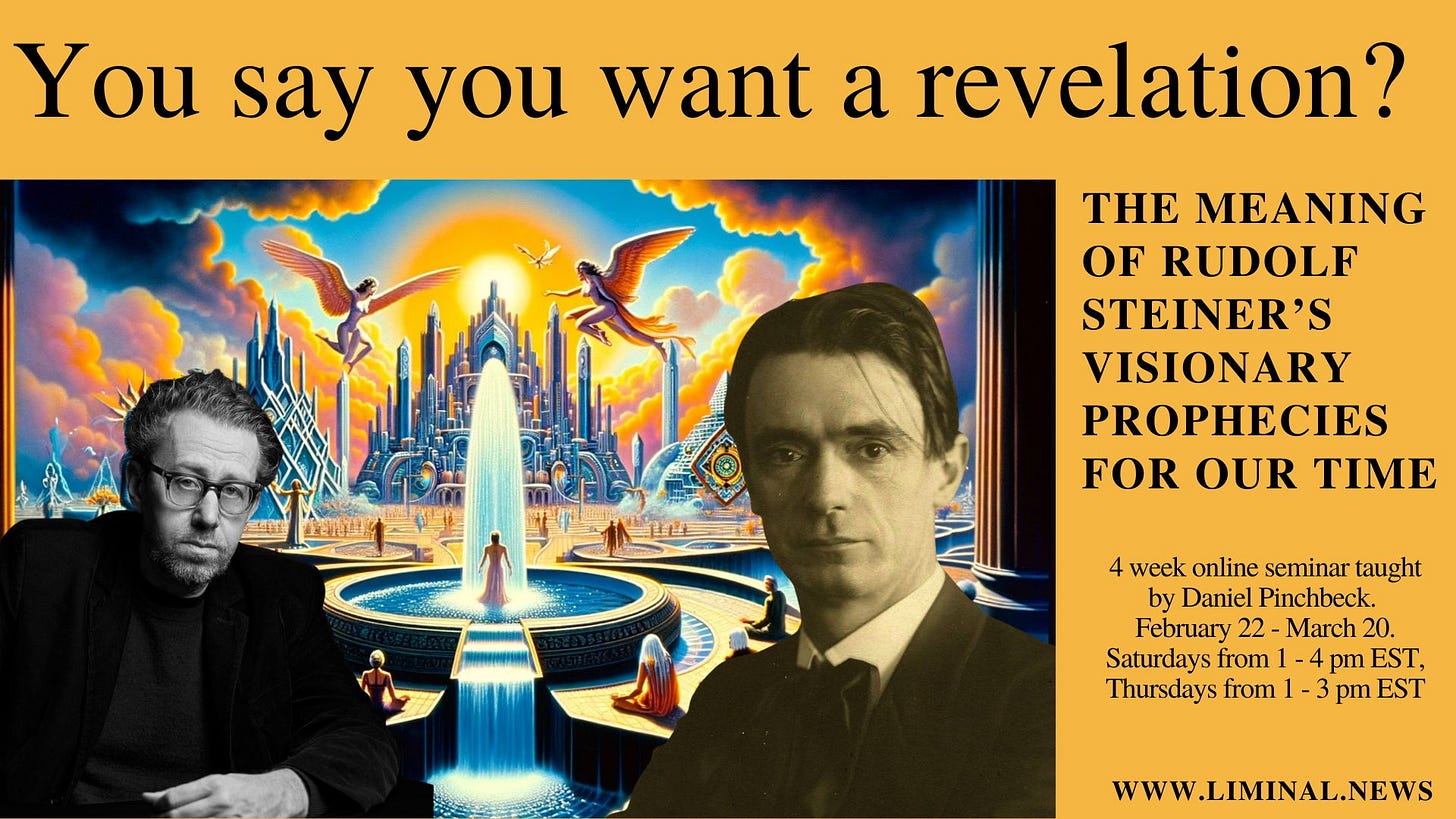For the last few days, I keep trying to write about some ideas I find very beautiful, but it is difficult for me to complete any thought as my attention keeps swiveling back to the rapidly unfolding destruction of the United States, where I unfortunately live. I was hoping to explore the Sufi scholar Henri Corbin’s idea of the “imaginal” — or the mundus imaginalis — and how it helps to illuminate the thought of modernist occult philosopher Rudolf Steiner (1861 - 1925) as well as the poetry of Rainer Maria Rilke (1875 - 1926). This is my sideways way, also, of promoting my upcoming seminar on Steiner, which I hope you will join (it starts on February 22).
Corbin defined the imaginal world as an objective realm, existing independently of human subjectivity, yet only accessible through the cultivated faculties of the soul. For Corbin, the imaginal is the bridge between the sensory world we experience directly and the intellectual; the material and the spiritual. In Creative Imagination in the Sufism of Ibn Arabi, he wrote:
Between the universe that can be apprehended by pure intellectual perception (the universe of the Cherubic Intelligences) and the universe perceptible to the senses, there is an intermediate world, the world of Idea-Images, of archetypal figures, of subtle substances, of "immaterial matter." This world is as real and objective, as consistent and subsistent as the intelligible and sensible worlds; it is an intermediate universe "where the spiritual takes body and the body becomes spiritual," a world consisting of real matter and real extension, though by comparison to sensible, corruptible matter these are subtle and immaterial. The organ of this universe is the active Imagination; it is the place of theophanic visions, the scene on which visionary events and symbolic histories appear in their true reality.
In this realm, archetypal images and spiritual beings manifest in forms accessible to the visionary consciousness. To perceive the mundus imaginalis, seekers have to purify their heart and do patient inner work, developing the faculty Corbin (much like Carl Jung) called “active imagination.”
Keep reading with a 7-day free trial
Subscribe to Liminal News With Daniel Pinchbeck to keep reading this post and get 7 days of free access to the full post archives.






